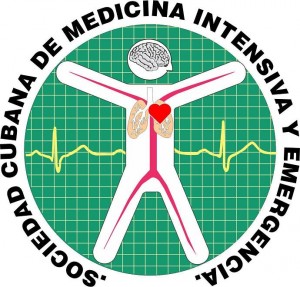Effectiveness of diaphragm ultrasound to assess the failure of NIV: A case report
Keywords:
breathing inadequacy, noninvasive ventilation, diaphragmAbstract
The detection of failure risk factors in noninvasive ventilation supposes a challenge in the cases of hypoxemic respiratory failure in which it’s decided to utilize it as first support. The echo-graphic exploration could be an interesting tool in this sense. We present a case of hypoxemic respiratory failure due to secondary severe pneumonia to SARS-CoV-2 infection. The thickening fraction was evaluated by means of diaphragm echography, in two different occasions with two different levels of continuous positive airway pressure (CPAP). After this procedure it was noticed improvement in the oxygenation parameters and a reduction of the thickening fraction that suggests reduced work of breathing. At the eighth day, it was possible to retire the CPAP completely and after 12 days in the UCI the patient was discharged to the hospitalization room showing good evolution. The diaphragm echography can suppose another tool when valuing the possible failure of noninvasive ventilation. In the future quality works that really evaluate their utility will be necessary.
Downloads
References
1. Alhzanni W, Moller MH, Arabi YM, Loeb M, Gong MN, Fan E. Surviving Sepsis Campaign: guidelines on the management of critically ill adults with Coronavirus Disease 2019 (COVID-19). Crit Care Med. 2020 doi:10.1097/CCM.0000000000004363
2. Brusasco C, Corradi F, di Domenico A, Raggi F, Timossi G, Santori G, et al. Continuous positive airway pressure in COVID-19 patients with moderate-Tosevere respiratory failure. Eur Respir J. 2021;57(2):2002524 doi.org/10.1183/13993003.02524-2020
3. Antonelli M, Conti G, Moro ML, Esquinas A, Gonzalez-Diaz G, Confalonieri M, et al. Predictors of failure of noninvasive positive pressure ventilation in patients with acute hypoxemic respiratory failure: a multi-center study. Intensive Care Med. 2001;27:1718–28
4. Gattinoni L, Marini JJ, Busana M, Chiumello D, Camporota L. Spontaneous breathing, transpulmonary pressure and mathematical trickery. Ann Intensive Care. 2020;10:88. doi.org/10.1186/s13613-020-00708-1
5. Umbrello M, Formenti P, Longhi D, Galimberti A, Piva I, Pezzi A, et al. Diaphragm ultrasound as indicator of respiratory effort in critically ill patients undergoing assisted mechanical ventilation: a pilot clinical study. Crit Care Med. 2015;19(1):1–10
6. Faraone A, Beltrame C, Crociani A, Carrai P, Lovicu E, Filetti S, et al. Effectiveness and safety of noninvasive positive pressure ventilation in the treatment of COVID-19-associated acute hypoxemic respiratory failure: a single center, non-ICU setting experience. Intern Emerg Med. 2021;16(5):1183–90
7. Tonelli R, Busani S, Tabbì L, Fantini R, Castaniere I, Biagioni E. Inspiratory Effort and Lung Mechanics in Spontaneously Breathing Patients with Acute Respiratory Failure due to COVID-19: A Matched Control Study. Am J Respir Crit Care Med. 2021;204(6):725–8
8. Tonelli R, Fantini R, Tabbì L, Castaniere I, Pisani L, Pellegrino MR, et al. Early inspiratory effort assessment by esophageal manometry predicts noninvasive ventilation outcome in de novo respiratory failure: A pilot study. Am J Respir Crit Care Med. 2020;202(4):558–67
9. Carteaux G, Millán-Guilarte T, de Prost N, Razazi K, Abid S, Thille AW, et al. Failure of Noninvasive Ventilation for de Novo Acute Hypoxemic Respiratory Failure: Role of Tidal Volume. Crit Care Med. 2016;44(2):282–90
10. Brochard L, Lefebvre JC, Cordioli RL, Akoumianaki E, Richard JC. Noninvasive ventilation for patients with hypoxemic respiratory failure. Semin Respi Crit Care Med. 2014;35:492–500






